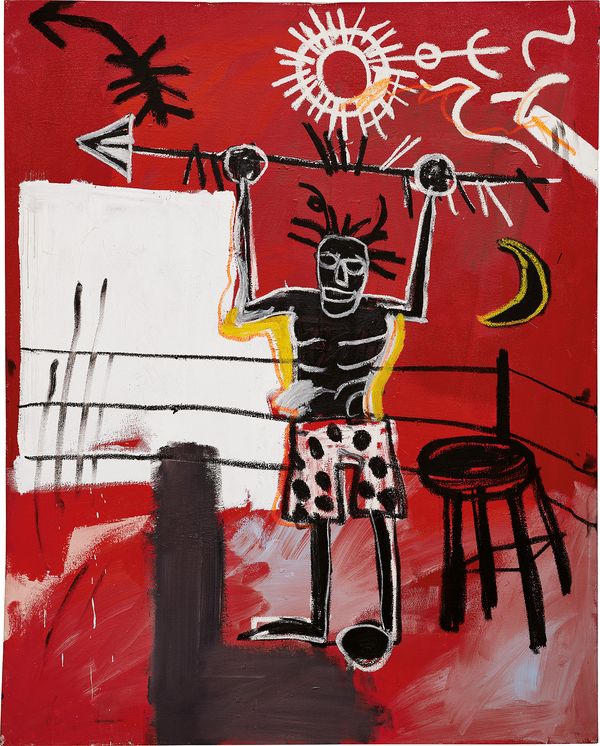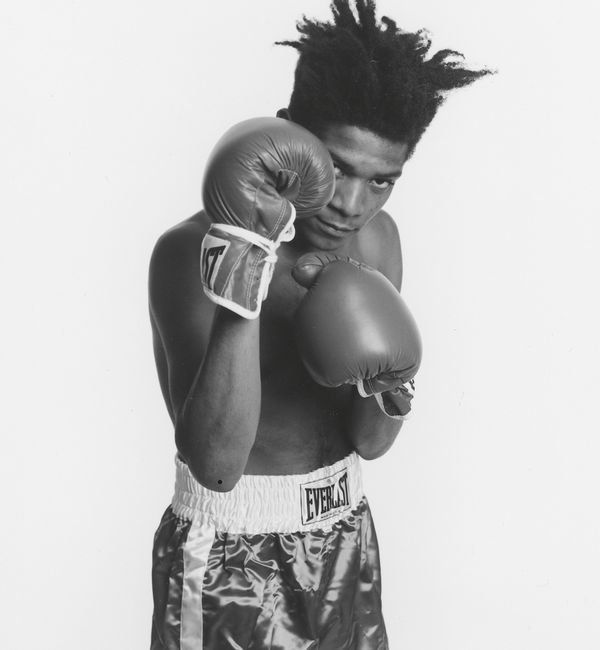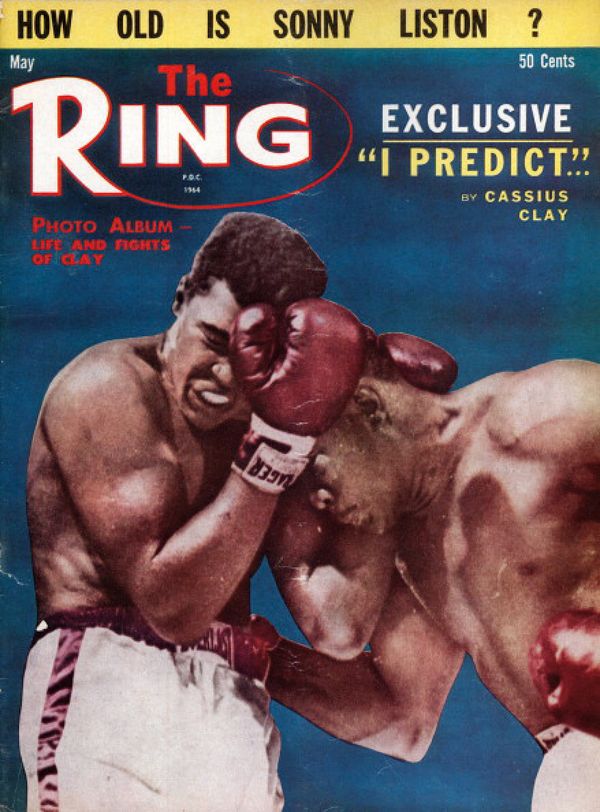Jean-Michel Basquiat The Ring, 1981. Estimate $10,000,000 - $15,000,000.
20th Century & Contemporary Art Evening Sale at Phillips New York, 14 November.
In the late 1970s, Jean-Michel Basquiat took the New York art scene by storm, emerging as a street poet hidden behind the pseudonym SAMO: a relentless tagger whose nom de plume began appearing all over the city. Though his name had been mentioned in the press the year before, it was not until 1981—the year he painted The Ring—that SAMO would officially reveal his identity to the international art-viewing public.
In January of that year, Basquiat was included in New York/New Wave, a multi-disciplinary exhibition examining the burgeoning avant-garde scene in the city, at the P.S. 1 Contemporary Art Center. Here, his raw, expressive vigor caught the attention of gallerists Annina Nosei and Bruno Bischofberger, who would become critical forces in catapulting his career. A few months following New York/New Wave, Basquiat had his first solo show abroad at Galleria d’Arte Emilio Mazzoli in Modena, Italy, and by the end of the year he was living and working in the basement of Nosei’s Soho gallery while participating in a robust program of international exhibitions. Deitch wrote, “during the year of 1981 [Basquiat] made the transition from a profusely talented and promising artist working on the street to a world-class painter, poised to become one of the most influential artists of his time."
Jean-Michel Basquiat, 1985. Photographed by Michael Halsband.
It was during this rapid rise to fame that Basquiat began to explore the subject matter that would to define the rest of his too-brief career. Perhaps the most central element in his visual language is the human figure, which Basquiat used to coalesce art history, pop culture, autobiography and the black experience. Speaking of the frequent visits he took to his local museum during his childhood, the Brooklyn Museum, the artist told Henry Geldzahler, "I realized that I didn't see many paintings with black people in them." In confronting this art historical gap, Basquiat expounded that "the black person is the protagonist in most of my paintings.”
Thus, just as Western art history has valorized Greek gods and saints, Basquiat sought to do the same with the champions of black history, from jazz luminary Charlie Parker to boxing phenomenon Muhammad Ali. When Geldzahler asked Basquiat what his subject matter was, the artist paused, then responded “royalty, heroism and the streets."
Cover of The Ring featuring Cassius Clay and Sonny Liston, May 1964. Photo by: The Ring Magazine via Getty Images
Perhaps a reference to the widely-read boxing magazine of the same name, The Ring’s Herculean figure is just one of the legendary boxers that the artist celebrated in his work, which included Joe Louis, Muhammad Ali (formerly Cassius Clay), Sugar Ray Robinson and Jersey Joe Walcott. Well-versed in the lives and achievements of these athletes, the artist grew up watching their matches with his father, Gérard Basquiat, who reminisced, “I was a big fan of boxing, and when [Jean-Michel] was a kid, there would be fights on television every Friday. We would sit together and watch. He talked about Joe Louis, Jersey Joe Wolcott, all of them—the great boxers of years past.”
In particular, the artist admired how each of these men had fearlessly challenged pervasive social and racial prejudices: they had, literally and figuratively, fought their way to fame and success. Louis and Ali had specifically achieved notoriety in Basquiat’s formative years, the 1960s and 1970s, for promoting racial integration and protesting cultural inequalities. By depicting these figures victorious, beneath a crown or halo, and accentuating their race with jet black paint, the artist canonized the African American heroes of his time in his paintings such as The Ring.
During the year of 1981 [Basquiat] made the transition from a profusely talented and promising artist working on the street to a world-class painter, poised to become one of the most influential artists of his time.
Jean-Michel Basquiat Self-Portrait, 1982. Private Collection, Artwork © 2019 The Estate of Jean-Michel Basquiat
Though it is impossible to be certain of the identity of the central figure in The Ring, its striking resemblance to Self-Portrait, 1982, leads one to believe that the work might portray Basquiat himself. Specifically, the boxer’s distinctive hairstyle—long, twisting dreadlocks—mirrored the artist’s at the time and was featured in his other self-portraits from the period. Regardless of whether or not Basquiat intended to explicitly depict his physical likeness, he captured an image, at least metaphorical, of himself standing victorious at the zenith of his career in 1981.
“He brought together street art and European old masters. He combines painting and writing. He combined icons from Christianity and Santería and voodoo,” espoused the musician Jay-Z, a collector of several works by the artist. “He turned boxers and jazz musicians into kings with golden crowns. And on top of all that mixing and matching he added his own genius, which transformed the work into something completely fresh and original. The paintings don't just sit on my walls, they move like crazy."



